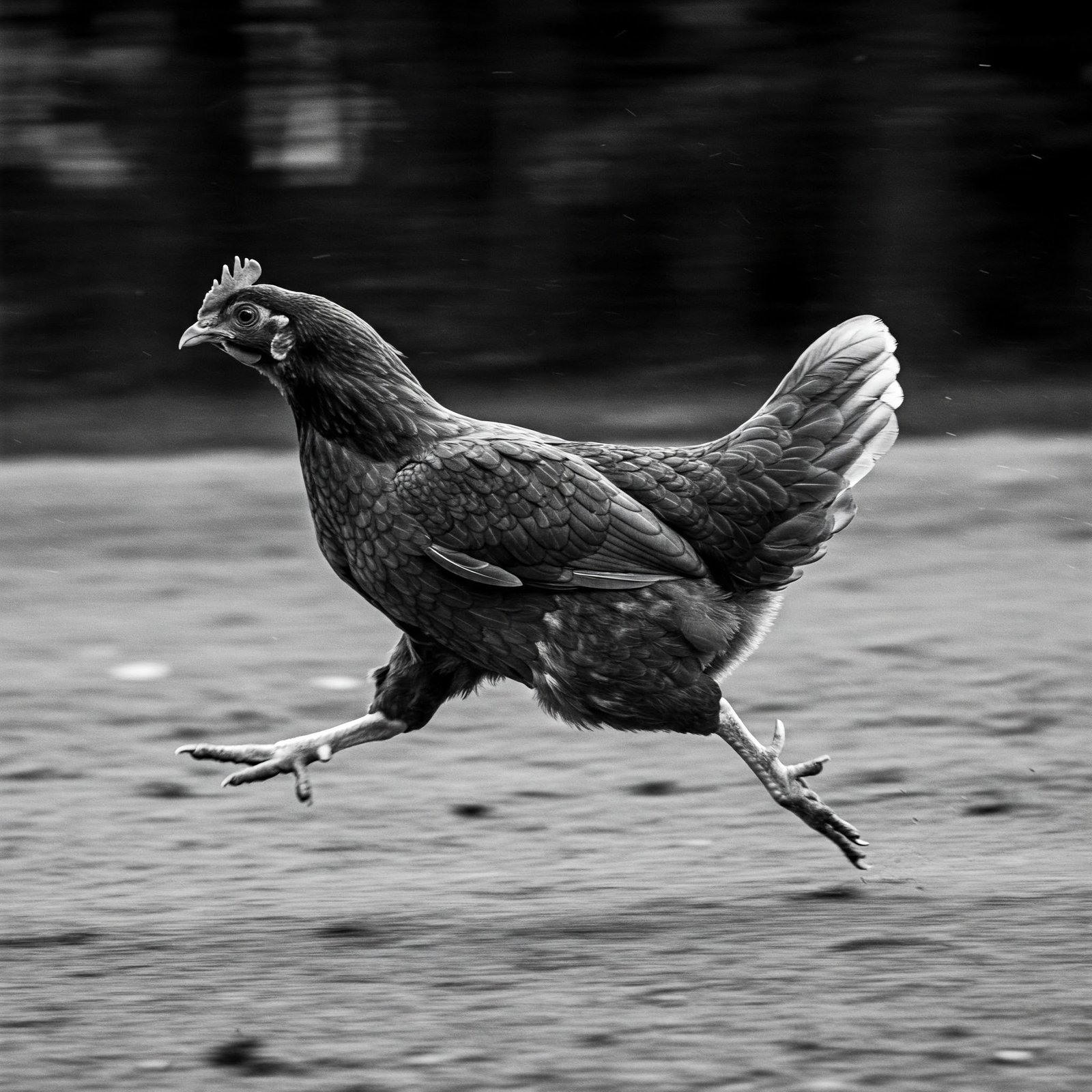Abstract
In the world of poultry farming, time is a ruthless variable. Every hour matters. Every small delay compounds. Broiler management, in essence, is not a long-distance marathon—it’s a 100-meter sprint. And in this sprint, even a half-second delay in reacting to a problem can put you out of the race entirely.
The Race Begins on Day-ONE
The sprint starts the moment chicks are placed. The first 24–72 hours determine the trajectory of the flock. Water temperature, brooder comfort, gut activation, and chick behavior are not just routine checks—they are the indicators of who gets a flying start, and who begins limping. A minor delay in correcting dehydration, or a misjudged brooding temperature, may seem recoverable. But it rarely is. By the time you see symptoms, the opportunity to lead the flock toward optimum performance has already been compromised.
Micro-decisions, Macro Impact
Effective farms don’t just act fast—they anticipate. The sprint mindset is about preparation, monitoring, and rapid response. It’s about decoding early behavior patterns and making preventive interventions before a problem makes it to your post-mortem report. That’s where resilience-building inputs and smarter management practices quietly rewrite outcomes. You won’t see them screaming in your records, but you’ll feel them in the absence of disease flare-ups, in uniform growth curves, and in flocks that never needed emergency fixes.
Delayed Detection = Lost Margin
In broiler management, problems rarely exist in isolation. A single delay in detection doesn’t just mean a dip in performance—it can initiate a chain reaction that spirals into economic and biological loss.
Take Coccidiosis, for instance.
A delay of even 12–24 hours in recognizing subclinical signs can result in:
- Patchy wet litter and huddling, often mistaken as a ventilation or temperature issue.
- Reduced feed intake in just a segment of the flock—early unevenness begins here.
- Loose, orange or bloody droppings appearing in scattered spots—not always caught in morning rounds.
- Within days, the gut lining is compromised, leading to secondary bacterial infections, increased antibiotic use, and a dragging FCR that’s hard to recover.
Ammonia Buildup: A Silent Saboteur
A spike in ammonia might not burn your eyes, but it burns profit margins.
- Birds become lethargic, feed intake slows subtly.
- Conjunctivitis, tear staining, and even blindness in chicks may start appearing.
- You’ll start seeing snicking, wheezing, and delayed air sacculitis—but by then, oxygen exchange has been compromised.
- Immunosuppression sets in quietly, and vaccine response drops.
- You’re now playing catch-up with higher mortality, downgrades at processing, and possibly increased condemnations due to airsacculitis and colibacillosis.
The Economic Undercurrent
These are not just biological setbacks—they are silent economic leakages:
- Flock takes longer to reach market weight, delaying rotation and cash flow.
- 1-2% drop in liveability, compounded with lower weights, can wipe out your margin.
- Feed conversion drifts by just 0.05–0.1 points, and your entire feed cost advantage is erased.
- Sorting labor doubles as uniformity breaks.
Broiler margins operate on a razor’s edge. In such an environment, delayed detection is not just a missed opportunity—it’s an incurred loss. What could have been a minor correction with minimal cost, turns into an operational disruption with compounding consequences. Early signs matter. But it takes a sprinting mindset to catch them. In broiler production, every hour of delay in identifying and correcting problems silently chips away at margin and performance. And when it comes to viral diseases like Infectious Bronchitis (IB), Newcastle Disease, or ILT, the cost of delay is even steeper—because you can’t undo a viral spread.
Infectious Bronchitis: The Clock Ticks Fast
With IB, symptoms may start deceptively mild:
- Soft chirping, slight head shaking, or a raspy breath—often mistaken for post-vaccinal reaction or dust irritation.
- Within 24–48 hours, the virus spreads across the flock, especially in high-density houses.
- Signs escalate to gasping, reduced activity, wet litter due to polyuria, and a sharp dip in feed conversion.
But here’s what doesn’t show immediately:
- Permanent damage to the trachea and kidneys, increasing vulnerability to E. coli and secondary infections.
- Delayed growth, poor feathering, and uneven flocks due to chronic respiratory stress.
- Poor vaccine response in overlapping flocks—because stressed birds mount weaker immunity.
- If it’s a nephropathogenic strain? Expect increased mortality without obvious respiratory signs, and wet bedding that invites other pathogens.
The Downstream Cost
- Every day of undetected viral stress means:
- Dropped uniformity by 5–10%,
- Slower weight gain and prolonged cycles,
- More culling at processing due to airsacculitis or emaciation,
- Higher rejection rates, and loss of customer trust in integrated systems.
Invisible Losses
- The overtime for labor, trying to grade birds,
- The extra feed given for weight recovery (that never fully compensates),
- The missed market window, especially for fixed weight contracts,
- And the worst: the vet call that should’ve happened 36 hours earlier.
Final Thoughts
Sprint Thinking, Not Marathon Comfort : Broiler farming isn’t about endurance—it’s about reflexes, timing, and speed. Diseases—especially viral ones—don’t wait for your schedule or staffing to align. If your response time doesn’t match the pathogen’s pace, you’re chasing losses. This is where resilient flocks, tighter surveillance, and real-time decision-making tools matter—not just to prevent disaster, but to avoid the compounding costs of what didn’t get noticed in time.

